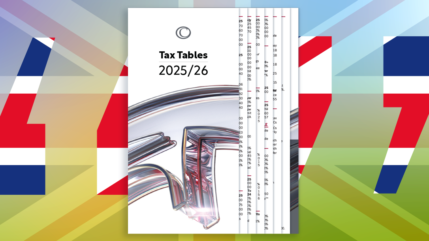Entrepreneurs’ Relief was a key focal point of Rishi Sunak’s first Budget, presented back on 11th March (remember that?). Sunak announced a number of measures, one of which was a dramatic slashing of the lifetime limit. In conjunction, Entrepreneurs’ Relief was renamed “Business Asset Disposal Relief”. Questions arise: what effect is this going to have in the short/medium term? And could we possibly see the scheme disappear altogether in the not-so-distant future?
Origins
Entrepreneurs’ Relief was introduced during 2008, under the Labour Government of Gordon Brown and then Chancellor Alastair Darling. Its introduction incentivised entrepreneurs by reducing the level of capital gains tax (20% → 10%) payable on the eventual sale of their business(es) or shares within their unlisted trading company. The amount of relief available on the sale proceeds was initially restricted to a lifetime limit of £1 million, which applies to each individual and not per business. This would quickly expand to reach a lifetime limit of £10 million, effective from 6th April 2011 through to 11th March 2020. Rishi Sunak delivered a significant cutback to the amount of relief available, which reverts back to the original £1 million mark for the scheme now known as Business Asset Disposal Relief (BADR). Is this really “getting it done” Rishi?
The Mechanics of BADR
Firstly, it’s important to understand what counts as qualifying gains. If you happen to be selling part, or the whole of your business, you must have been a business owner/partner or sole trader who has owned the business for at least two years. This continues to apply if you are instead looking to wind up and close down the business altogether, and then looking to extract profits held within. This period is then limited to three years when it comes down to disposing of any business assets used for trading purposes for attracting relief under the scheme.
If you’re selling the shares of an unlisted trading company (i.e. non-investment company), in order to benefit you must be either an officer or an employee of the company, and the same two year minimum holding period must also apply. One final condition which needs to be met is that you must be entitled to a 5% share of:
- Company distributable profits
- Company sale proceeds
The mechanism of how the relief applies can best be illustrated with an example:
- James decides to sell his trading business in the 2020/21 tax year, of which he is sole owner, and has built up over the last 10 years.
- He has qualifying gains for Business Asset Disposal Relief of £2 Million and is himself a higher rate tax-payer (current rate 40%).
- He applies his Capital Gains tax-free allowance, which is £12,300 for this current tax year, which reduces his qualifying gains on the first £million, to £987,700.
- BADR permits James to pay Capital Gains tax (CGT) at a reduced rate of 10% (as opposed to the usual 20% applicable for a higher rate tax payer).
- The tax due on the first £1 million is £98,770.
- For the second £1 million of qualifying gains, James will pay Capital Gains tax at 20%, with the tax due amounting to £200,000.
- The total tax paid upon the sale of his business equates to £298,770, which represents an effective tax rate 14.94%.
- The savings to James, had BADR not been available, is £98,770.
- James has now used up his entire £1 million lifetime limit, and any gains realised on the sale of any subsequent companies, will be taxed at the full CGT rate of 20%.
What are the likely impacts?
There’s a good chance there will be a number of SME1 business owners out there who were counting on their business(es), either through a sale or winding up, to provide a large bulk of their retirement provision. These people as a result will be worse off than before this relief reduction was introduced, but it does highlight the importance to individuals of keeping a well-diversified portfolio across different asset classes, investment products and business ventures.
As a result of this relief reduction, we could see business owners beginning to think how they can work with professional advisers to identify how they might extract value from the business over the long-term. For example, in the form of increased employer pension contributions (ensuring that these remain “Wholly and Exclusively” for the purpose of business, under HMRC’s guidance, and therefore deductible expenses for Corporation Tax relief).
The government takes the position that the lifetime limit reduction will not impede much at all on entrepreneurship, arguing that genuine risk takers and entrepreneurs are still being encouraged to pursue free market enterprising activities, with over 80% of those using the relief being unaffected. This of course coincides with the impact on the amount of savings this will yield to the exchequer, with The Office for Budget Responsibility (OBR) forecasting a level of savings in the range of c. £6 – £6.5 billion over six years.
There is perhaps an argument to say that the scheme has good intentions but falls short of actively encouraging new entrepreneurs to set up businesses, since the BADR rewards entrepreneurs at the end of the business chain rather than from inception. For small and medium sized enterprises (SMEs), their main barrier to entry is obtaining funding, to build and grow their business. The chancellor went further, stating his intention that some of these savings would be funnelled back into commerce, with the budget setting out plans to:
- Increase the Research & Development expenditure tax credit from 12 to 13%
- Increase the Buildings Allowance from 2 to 3%
- Increase the Employment Allowance from £3,000 to £4,000
In economic terms, the worst of the coronavirus pandemic is yet to be felt. On the back of a crippling couple of months, it is a sure bet that we will soon see an emergency budget presented by the chancellor, with the difficult aim of balancing measures of igniting the economic recovery against the possibility of another round of austerity. Could this mean that BADR could soon be confined by Her Majesty’s Revenue & Customs (HMRC) to the scrap heap altogether?
Perhaps Rishi Sunak instead has his sights set more firmly on Investors’ Relief. This failed to attract his attention during the last budget, with the lifetime limit remaining unchanged at £10 million for qualifying shareholders. Time will soon tell.













